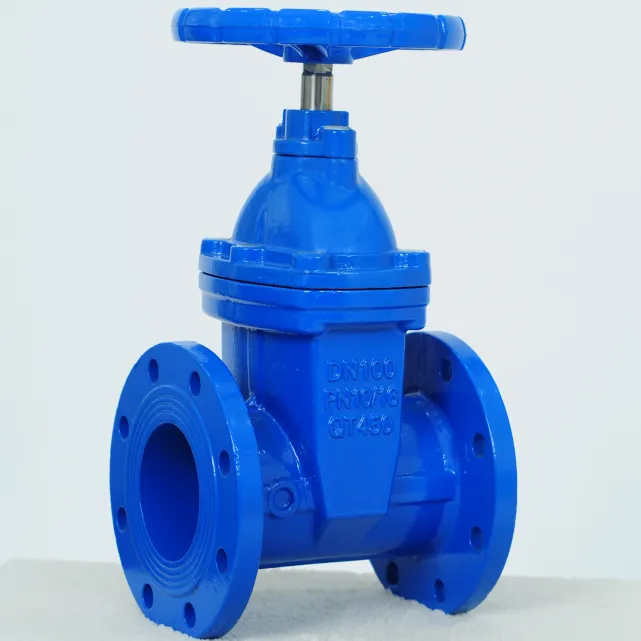High Efficiency Pressure Control Valve for Safe System Operations
Understanding High-Pressure Reducing Valves Function, Applications, and Importance
High-pressure reducing valves (HPRVs) are critical components in various industrial settings, designed to manage and control high-pressure systems effectively. These valves are essential for ensuring safety, operational efficiency, and equipment longevity. In this article, we’ll explore the fundamentals of high-pressure reducing valves, their functions, applications, and their significance in different industries.
What is a High-Pressure Reducing Valve?
A high-pressure reducing valve is a type of pressure control device that regulates the pressure of fluids, such as gases or liquids, from a high-pressure source to a lower, desired pressure level. The primary function of an HPRV is to reduce the pressure of incoming fluid to a safe and manageable level, allowing for proper function and operation of downstream equipment and systems.
HPRVs typically consist of several key components the valve body, the diaphragm, the spring mechanism, and the adjusting screw. The diaphragm responds to the incoming pressure and moves to adjust the valve opening. The spring mechanism provides the necessary resistance to ensure that the output pressure remains at the desired level, regardless of variations in the input pressure.
Functionality
The operation of a high-pressure reducing valve can be understood through a simple process. When high-pressure fluid enters the valve, the diaphragm senses this pressure and allows the valve to open and close accordingly. Once the output pressure reaches the pre-set level, the diaphragm moves to reduce flow, thus maintaining consistent output pressure. This automatic response ensures that downstream equipment is protected from pressure surges, which can cause damage or inefficiencies.
Additionally, many HPRVs are designed with a bypass feature, which allows for seamless operation even during maintenance or replacement. This feature is particularly important in critical applications where downtime can lead to significant operational disruptions.
Applications
High-pressure reducing valves are commonly used across various industries including
1. Oil and Gas In the oil and gas sector, HPRVs are employed to manage the pressure of natural gas and crude oil during extraction and processing. They ensure that the pressure is kept within safe limits to prevent leaks and accidents.
high pressure reducing valve

2. Chemical Processing These valves play a crucial role in chemical manufacturing, where precise pressure control is necessary for reacting chemicals safely and efficiently.
4. Water Supply Municipal water systems utilize HPRVs to maintain safe water pressure levels in distribution networks, preventing pipe bursts and ensuring reliable service.
5. Power Generation In power plants, HPRVs are essential for controlling the pressure of steam and water, which are critical for various generation processes.
Importance of High-Pressure Reducing Valves
The significance of high-pressure reducing valves cannot be overstated. Firstly, they enhance safety by preventing excessive pressure that could lead to catastrophic failures. This is particularly important in industries handling hazardous materials or operating under extreme conditions.
Secondly, HPRVs improve the efficiency of industrial processes. By maintaining optimal pressure levels, they ensure that equipment operates at peak performance, thus reducing energy consumption and operational costs.
Moreover, the use of high-pressure reducing valves extends the lifespan of equipment. By protecting pumps, pipes, and other components from damage due to pressure surges, HPRVs contribute to lower maintenance costs and longer equipment life.
Conclusion
In conclusion, high-pressure reducing valves are indispensable tools in industrial applications, serving to control and regulate pressure in high-pressure systems. Their ability to automatically adjust to varying pressure levels enhances both safety and efficiency, making them a critical component in many industries including oil and gas, chemical processing, HVAC, water supply, and power generation. As industries continue to evolve and demand more sophisticated pressure control solutions, the role of HPRVs will undoubtedly become even more crucial in ensuring safe and efficient operations.
-
The Key to Fluid Control: Exploring the Advantages of Ball Valves in Industrial SystemsNewsJul.09,2025
-
The Versatile World of 1, 2, and 3 Piece Ball ValvesNewsJul.09,2025
-
Stainless Steel Ball Valves: The Ideal Choice for Efficient Flow ControlNewsJul.09,2025
-
Optimizing Fluid Control with Ball Float ValvesNewsJul.09,2025
-
Manual Gate Valves: Essential for Control and EfficiencyNewsJul.09,2025
-
Everything You Need to Know About Butterfly ValvesNewsJul.09,2025
-
The Versatility of Wafer Type Butterfly ValvesNewsJul.08,2025




